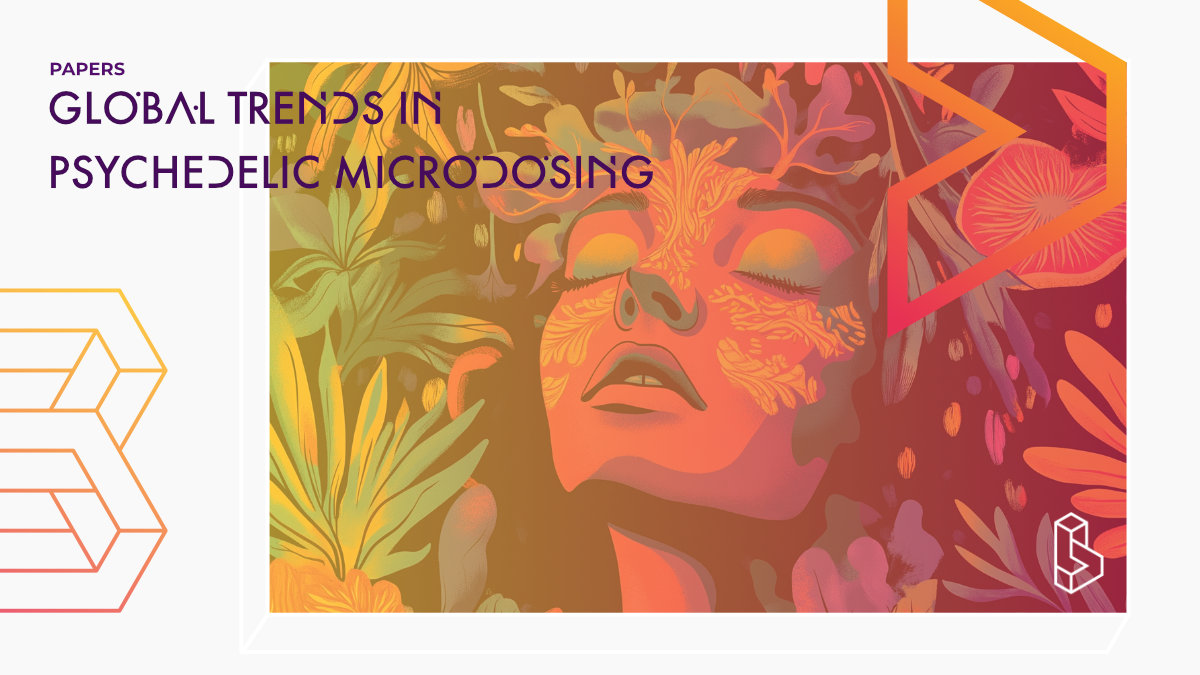This online survey (n=6,193; 2,488 microdosers) examines differences between exclusive microdosers and those who use both micro and macrodoses of psychedelics. The study finds exclusive microdosers were typically older, more likely to be female and non-Caucasian, with psilocybin (74.5%) and LSD (34.4%) being the most commonly used substances, primarily for general wellbeing (73.0%).
Abstract of Global Trends in Psychedelic Microdosing
“Despite psychedelic microdosing being a growing practice, the research on the topic is still in its infancy. While several studies have described the characteristics, motivations and practices of microdosers, the differences between individuals that only microdose and those that use both micro and macrodoses of psychedelics remain unexplored. In an online survey, we collected data of 6193 psychedelic consumers of which 2488 were microdosers of up to 11 different classical and atypical psychedelics. In comparison to respondents that use both microdoses and macrodoses, exclusive microdosers were older in age (46.4 vs. 42.0 years), had a larger proportion of females (68.4% vs. 44.7%), were non-Caucasian (25.4% vs. 14.7%), urban residents (43.9% vs. 38.5%), and had a lower average lifetime use of non-psychedelic substances (3.8 vs. 4.7 substances). Most consumers (52.5%) microdosed psychedelics multiple times a month, commonly using psilocybin
(74.5%), LSD (34.4%), and ketamine (15.8%), with most users (64.6%) not testing their substances. The most common reason for microdosing was improving general wellbeing (73.0%), and psychedelics were used for treating several physical and mental health conditions. Additional analyses examined spending habits of consumers. This study adds to the growing literature on the naturalistic use of psychedelic microdosers.“
Authors: Omer A. Syed, Rotem Petranker, Emily C. Fewster, Valentyn Sobolenko, Zeina Beidas, M. Ishrat Husain, Stephanie Lake, & Philippe Lucas
Summary of Global Trends in Psychedelic Microdosing
The article begins by addressing the renewed interest in psychedelics, particularly as a promising avenue for mental health treatment. Previously overlooked due to regulatory restrictions and societal stigma, substances like psilocybin, LSD, and MDMA have re-emerged as therapeutic options for mental health, backed by encouraging findings for conditions that are often treatment-resistant. Traditional research has focused on higher, hallucinogenic doses, yet an emerging trend, “microdosing,” has gained popularity. Microdosing involves taking very small, sub-perceptual doses, typically of psychedelics, that do not induce full hallucinogenic effects. This practice has garnered attention due to anecdotal claims of enhanced creativity, mood, and cognitive function, even though empirical support remains limited.
Previous studies have documented some positive outcomes associated with microdosing, though the methodology in these studies often relies on observational data, and placebo-controlled evidence is scarce. The current research aims to add rigour to the microdosing discourse by examining differences between those who only microdose and those who consume both micro and larger doses (macrodoses) of psychedelics. This study hypothesises that frequent microdosing occurs monthly, that well-being is the primary motivation, and that most participants do not test their substances. Further, it posits that exclusive microdosers likely have less history with non-psychedelic substances than those who also consume macrodoses.
Aims and Hypotheses
The study’s main objectives are to investigate distinctions between exclusive microdosers and those who take both microdoses and macrodoses. The primary hypotheses are as follows:
Find this paper
https://doi.org/10.1080/02791072.2024.2424284
Paywall | Google Scholar | Backup | 🕊
Cite this paper (APA)
Syed, O. A., Petranker, R., Fewster, E. C., Sobolenko, V., Beidas, Z., Husain, M. I., Lake, S., & Lucas, P. (2024). Global trends in psychedelic microdosing: Demographics, substance testing behavior, and patterns of use. Journal of Psychoactive Drugs. https://doi.org/10.1080/02791072.2024.2424284
Study details
Compounds studied
LSD
Psilocybin
Ketamine
Topics studied
Microdosing
Healthy Subjects
Study characteristics
Survey
Participants
6193
Humans

